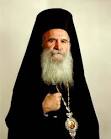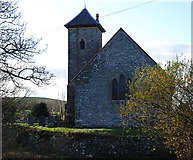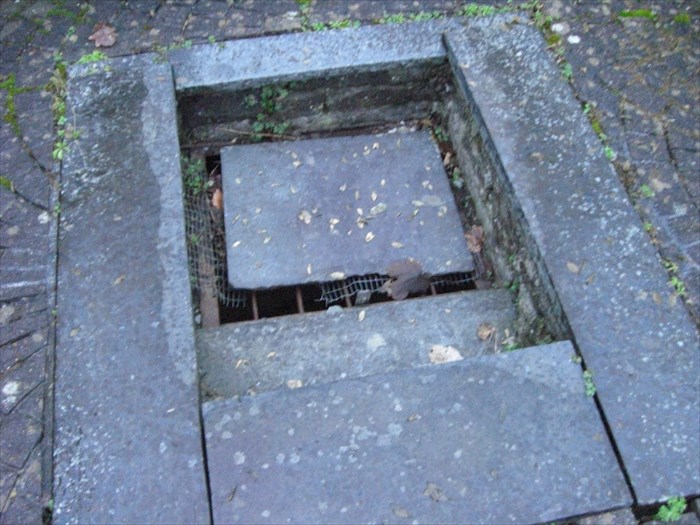by lampeter | Oct 28, 2015 | Articles
His Eminence, Archbishop Gregorios
of
Thyateira and Great Britain

|
His Eminence was born in the present-day Turkish-occupied village of Marathovounos in the district of Famagusta, Cyprus, on 28th October 1928. He was the ninth and last child of the family of the builder Theocharis and his wife Maria Hadjitofi. At the age of three he was orphaned through his father’s death.
After completing his primary education at the village school, the eleven-year-old Gregorios became an apprentice as a shoemaker in his brother-in-law’s shop, where he worked for the next eight years.
At the age of twenty he decided to attend a secondary school for which he enrolled in 1949 at the Higher Commercial School of the town of Lefkoniko which, at that time, had only five classes. He was accepted in the second-year class.
|
|
| In 1951 he transferred to the famous Pan-Cyprian Gymnasium, Nicosia, having become a rasophor, and he was later ordained deacon on the Sunday of Pentecost, 1953 at the Church of St. Savvas in Nicosia by the late Archbishop Makarios III.
He graduated from the Gymnasium in 1954 and went to Athens to study at the Theological School of the University there. Before receiving his university degree in February 1959, he was appointed to the Church of All Saints in London, arriving there and starting his duties at the Church of All Saints in Camden Town in April 1959. He was ordained presbyter by the late Archbishop of Thyateira, Athenagoras Kawadas, on the 26th of the same month.
In 1964 he was appointed Chancellor of the Archdiocese of Thyateira. On 12th December 1970 he was consecrated Bishop of Tropaeou by the blessed former Archbishop of Thyateira Athenagoras Kokkinakis at the Cathedral of Sta Sophia. From the first day of his ordination he undertook to organize and administer the St. Mary’s Cathedral and the Church of St. Barnabas the Apostle in Wood Green, North London.
On 16th April 1988 he was unanimously elected by the Sacred Synod of the Ecumenical Patriarchate as Archbishop of Thyateira and Great Britain and his enthronement took place at the Cathedral of Sta. Sophia in West London. |
by lampeter | Sep 22, 2015 | Articles
Saint Llawddog , or Lleuddad , ( fl. 600? ), is said to have been the son of Dingad ab Nudd Hael , king of Bryn Buga (i.e. Usk ), and Tefrian or Tonwy , daughter of Lleuddyn Lwyddog . Few details are known about his life, but tradition maintains that he worked many miracles. He appears to have forsaken his father’s kingdom in order to live the life of a religious recluse with his brother BAGLAN in Caernarvonshire . His later years are linked with the isle of Bardsey . He was chosen abbot of the island’s religious community, and is said to have ended his days there. A Welsh ‘ Life of S. Llawddog ’ is preserved in National Library of Wales (late 16th cent.). The churches of Cenarth, Penboyr, Llanllawddog in Carmarthenshire and Cilgerran in Pembrokeshire were all originally dedicated to Llawddog. His memory is also perpetuated in the local topography of the places so named, in the form Lleuddad, in parts of the Llŷn peninsula . His feast-day is variously given as 15 Jan., 21 Jan. or 10 Aug.
The local parish Church is dedicated to Saint Llawddog. Although the present building is relatively modern, it is on an important ancient site, and was the “bishop house” of the Cantref of Emlyn.
Within the Churchyard is a stone with Ogam Scrip, still visible and a stone’s thow away on the south side of the river is the Holy Well of St Llawddog.


by lampeter | Aug 26, 2015 | Articles

Account of a talk given by Dr Peter Brooke in Llaneglwys Village Hall, 23rd August 2015
In 787, a Church council was held in Nicaea under the auspices of the Eastern Roman Empire, centred on Constantinople, which authorised the veneration of religious images (‘icons’). The Western Roman Empire, centred on Rome in Italy, had collapsed over two centuries earlier but a new centralised political society was developing under the Frankish King, Charlemagne. In Charlemagne’s court a book was prepared which condemned the canons on the veneration of icons agreed at Nicaea. The book was called the Opus Caroli – ‘Charles’s Work’ – so it was presented as of it had been written by Charlemagne himself. It was an important project, part of the process by which a new Western Empire was being created with its own church, independent of the continuing Roman Empire and its church, centred on Constantinople.
In the event, the project of the Opus Caroli was aborted through the intervention of the Patriarch of Rome, the Pope, still anxious to maintain the connection with ‘New Rome’, Constantinople. Nonetheless a council of the Western Empire was held in 794 – the Council of Frankfurt – which condemned the Eastern council albeit in a much more ambiguous way than had originally been planned.
Obviously what was happening was political. But Peter argues that it also reflects an important cultural difference. The new Empire of Charlemagne was built on the basis of peoples – Irish, Angles, Saxons, Germans, Franks, Visigoths – who had never been subject to the old Roman Empire. Constantinople on the other hand was the continuation of the Empire and therefore heir to the classical tradition of Greece and Rome. The principle writings in defence of the veneration of icons by St John of Damascus and St Theodore the Studite, were never circulated in the West but if they had been, Peter argues, there would have been many people who would have found them quite incomprehensible.
One of their central arguments was that there was an ontological connection between an image (for example of Christ) and its prototype (Christ Himself), so that one could, through the image, venerate the prototype. This was an idea that was well established in the classical tradition but was quite alien to the artist-monks working in what is called the ‘insular’ tradition – the art, sometimes called ‘Celtic art’, that was being produced in the monasteries of Ireland and of the North of England. Insular art is ‘rhythmic’, it is an art that invites us to contemplate in silence the purely ‘abstract’ interaction of lines and colours. Where there are figurative images they are arbitrary and made to conform to the overall rhythm. Peter showed three examples of ‘portraits’ of Christ, from the Book of Kells – all completely different with no thought of producing a recognisable ‘likeness’.
The contrast between insular art and classical art is striking and insular art was widespread throughout Europe. There were other influences at work, including elements taken from the old Roman classical tradition, but the classical ideal was not sufficiently well established to produce the sort of argument on the relation between image and prototype that developed in the East.
Eventually the West produced the beautiful fusion between rhythm and representation that we call ‘Romanesque’ art. In the East too the classical tradition was modified by the influence of other, non-Roman cultures. Russia inherited its religion and its iconography from Constantinople but not the full pre-Christian classical heritage. The Russian icon (at least until the seventeenth century) is certainly figurative, affirming the relation between image and prototype, but there is a greater emphasis on purely pictorial, or ‘abstract, principles of construction. Round about the fourteenth century – but these would all be topics for other talks – the early Italian ‘Renaissance’ would be heavily influenced by classically trained artists and thinkers going West as the Eastern Roman Empire shrank before the advancing power of Islam. And in the seventeenth century the eastern icon tradition in both the Greek-speaking and Slave worlds, would fall (and what a fall there was!) under the influence of a later, almost photographic, ‘Italianate’ school of painting.
by lampeter | Aug 20, 2015 | Articles

From Strata Florida, take the B4340 four miles east to Tynygraig. At Ystrad Meurig take a sharp turn left onto a steep road (signposted ‘Swyddyfynnon’) and after half a mile turn right onto a narrow lane to Llanwnnws.
This porch of this remote church contains a very fine inscribed early Christian monument. The stone reads: XPS Q[U]ICUNQ[UE] EXPLICAU[ER]IT H[OC] NO[MEN] DET BENEDIXIONEM PRO ANIMA HIROIDIL FILIUS CAROTINN: ‘(The Cross) of Jesus Christ. Whoever shall (have) read this name, may he give a blessing for the soul of Hiroidil son of Carotinn’. The formula, lettering, language and cross-from all suggest a ninth-century date.
Latin inscribed stones such as this are our earliest significant remains of the early churches in Wales. This one follows a formula found elsewhere (for example the Pillar of Eiliseg in Llangollen and on monuments in Ireland) which exhorts the viewer to pray for the dedicatee of the monument, Hiroidil son of Carotinn, by saying the name of Jesus, which is the name inscribed in contracted form in Greek capitals XPS, i.e. Christus (with a contraction mark on the middle letter), on the top of the stone.
A monument such as this was likely to have stood in a visible place. At Maen Madog in Glamorgan we find one such stone by the side of a Roman road. Often they were taken into churches for preservation, so we do not really know where this one was originally placed.

by lampeter | Aug 18, 2015 | Articles

FFYNNON Y SANTES FFRAID
( SN675671)
- Meurig Jones
Saif y ffynnon ar dir fferm Cynhawdref Uchaf (hen gartref Ieuan Fardd 1731-1788) ger pentref Swyddffynnon (Ffynnon-oer y gelwid y lle yn yr hen amser) ym mhlwyf Lledrod uchaf, ym maenor Mefennydd, Ceredigion.
Cysegrwyd y ffynnon i Ffraid oherwydd bod y santes yn gysylltiedig ag Urdd y Sistersiaid, sef perchnogion y tir yn yr Oesoedd Canol. Santes Wyddelig oedd Ffraid ac roedd y Sistersiaid yn berchen ar dir sylweddol yn Iwerddon a Chymru. Roedd gan yr ardal i’r de-orllewin o’r afon Ystwyth hen gysylltiad â ‘r Demetae llwyth Gwyddelig Celtaidd – ac yno goroesodd yr iaith Wyddeleg tan yr unfed ganrif ar ddeg. Gwelwn dystiolaeth o hyn ar garreg goffa o’r nawfed ganrif yn eglwys Gwnnws, Llanwnnws:
QUINCUNQUE EXPLICAVERIT HOC NOMEN DET BENEDIXIONEM PRO ANIMA HIROIDL FILIUS CAROTINN
(Pwy bynnag sy’n medru egluro’r enwau yma roddent weddi dros enaid Hiroedl mab Carodyn(?)
Mae cysylltiad rhwng y santes a’r ddiod feddwol oherwydd bod yna ddywediad am ‘Gwrw Sant Ffraid’. Cyfeirir ato yn Llyfr Coch Llanelwy:
‘Quaedam consuetudo vocata corw Sanfrait ‘.
Yn ôl traddodiad pan oedd Ffraid yn ifanc, ei dyletswydd hi oedd godro’r gwartheg a gwneud ymenyn yn yr hafod, sef preswylfa’r haf i drigolion ardaloedd mynyddig Cymru. Diddorol yw sylwi felly, mai ar dir fferm Cynhawdref (Cynhafdref yn gywir) y mae Ffynnon Ffraid. Roedd lleiandy i ‘r Santes Ffraid rhwng pentrefi Llanrhystud a Llansanffraid ar yr arfordir yn ôl Lives of the British Saints gan Baring-Gould a Fisher. Yn anffodus collwyd unrhyw draddodiadau gwerin a fu unwaith yn gysylltiedig â’r ffynnon, ond gwyddom ei bod yn hen iawn am fod cyfeiriad ati yn y gyfrol Map of South West Wales and the Border in the Fourteenth Century gan W Rees. Er i’r traddodiadau llafar gael eu colli ni ellir peidio â rhyfeddu at bensaernïaeth y ffynnon. Mae ar ffurf cwch gwenyn, ffurf brin yng Nghymru , unigryw yn y de-orllewin . Dylai gael ei diogelu pe bai ond am hynny yn unig. Bu llwyn yn tyfu drwy gerrig y ffynnon am flynyddoedd ac roedd ei wreiddiau yn dal y cerrig yn eu lle, ond gwywodd y llwyn a bellach mae’r cerrig yn symud a’r dirywiad i’w weld yn waeth ar ôl tywydd oer iawn yn y gaeaf.
YR YMGYRCH I ACHUB FFYNNON FFRAID
Ers pedair blynedd bellach mae Anwen Davies, a’i mam Jasmine Jones, perchnogion Cynhawdref Uchaf ac Isaf wedi ymdrechu i achub y ffynnon rhag dadfeilio. Dyma fanylion yr ymgyrch fel y’i cafwyd gan Anwen:
Ebrill 9ed 1992 – Ffonio A.J. Parkinson, Comisiwn Brenhinol Henebion yng Nghymru.
Ebrill15ed Ateb yn ôl gan Mr. Parkinson yn ein cynghori i ysgrifennu at CADW. Dangoswyd tipyn o ddiddordeb yn y siâp cwch gwenyn. Daeth CADW allan i gofnodi’r ffynnon, tynnu lluniau a rhoi cyfeirnod map. Dyma ddisgrifiad dynion y Comisiwn o’r ffynnon:
Ffynnon wedi ei hadeiladu o gerrig sychion yng nghornel o’r orglawdd yng ngardd Cynhawdref Uchaf tua 14m i’r de o’r ffermdy. Mae’r ffynnon bron yn sgwâr o ran cynllun. Mae’r ochr sy’n wynebu’r dwyrain yn codi i 2.15m o led a saif 2.3m o daldra. Mae’n blaenfeino i’r pen ac yn edrych fel siâp pyramid ond heb fod yn bigfain. Mae’r agoriad i’r ffynnon yn 660mm o led a 740 mm o uchder ac mae’r siambr lle mae’r dŵr ar ffurf pedol. Mae lefel y dŵr ynddi yn gyson, sef tua 100mm o dan y garreg yn y fynedfa. Mae hanes lleol yn cofnodi fod y mynachod yn defnyddio’r ffynnon wrth deithio o Ystrad Fflur, tua 7km i’r dwyrain, ac mai dyma pam y defnyddir y term ‘sanctaidd’ i ddisgrifio’r ffynnon. Ond nid yw Cynhawdref ar unrhyw lwybr dwyrain i’r gorllewin. Yn llyfr Frandis Jones, The Holy Wells of Wales, nid oes sôn am y ffynnon yma yn Cynhawdref ond mewn man arall yn ymyl Swyddffynnon.



by lampeter | Aug 18, 2015 | Articles

Llandre (Llanfihangel Genau Glyn)Church sit in a small village 5 miles north of Aberystwyth. It is more properly named Llanfihangel Genau’r Glyn, but it shortened name was easier on the tongue so is in more common use. There is a persistent legend that the church was originally intended to be sited at Glanfred, on the banks of the Leri about a mile to the north-east, and be dedicated, like the church at Llan-non, to St. Ffraid- or Bridget.
The builders constructed the walls, but each morning when they returned to their work, and the previous day’s work had fallen down. One day apparently a mysterious voice was heard whispering in the wind. It gave instructions that the church was to be dedicated to St. Michael (Mihangel), and built at the mouth of the valley – Genau’r Glyn.
The dedication to Mihangel suggests an early Welsh church. There are about 100 dedications to the Archangel in Wales, and 8 in Ceredigion. The Celtic cult of Mihangel is associated with heights according to Padraig O Riain in the Cardiganshire County History.
The church used to be called Llanfihangel Castell Gwallter, and this name is to be found on the communion cup which is dated as 1573. An antiquity of the area is given by the presence of the “Holy Well” just below the lych gate and recently restored. The tradition in the village is that it was used as a healing well not that long ago.
The present building, a 19th century restoration, stands at the entrance to a steep cwm. The graveyard extends outside the walls so that scattered tombstones poke up through the woodlands on the steep slopes above the church. The slope is unstable in places, and the graves are gradually tumbling down the hill.
A Community service restoration project in the area is slowly helping to rework the nearby walls and re-enforce the church lands.
by lampeter | Jun 22, 2015 | Articles
Confession in life can manifest itself in many different forms. Most societies hold the confession of things done that are wrong as the basis of a judicial process, usually the issues are unwillingly teased out. Then of course there are varying ways of addressing these in terms of censure.
Within a Christian context, the Scriptures and the teaching and the practices of the historic Church has emphasised the importance of confession within an individual’s sacramental life. (more…)
by lampeter | Jun 22, 2015 | Articles
The Illness and Cure of the Soul in the Orthodox Tradition – Peter Brooke
Substance of a talk given in Brecon, June 2015.
(more…)










Recent Comments